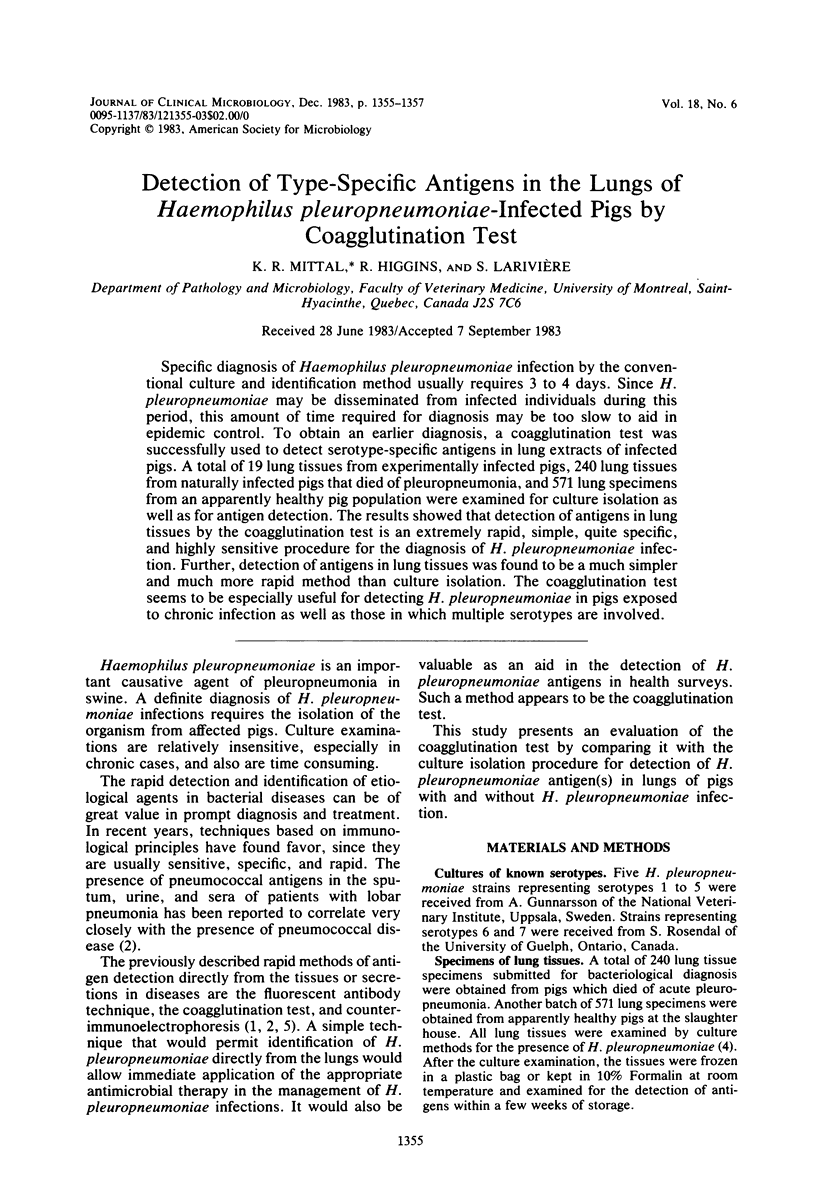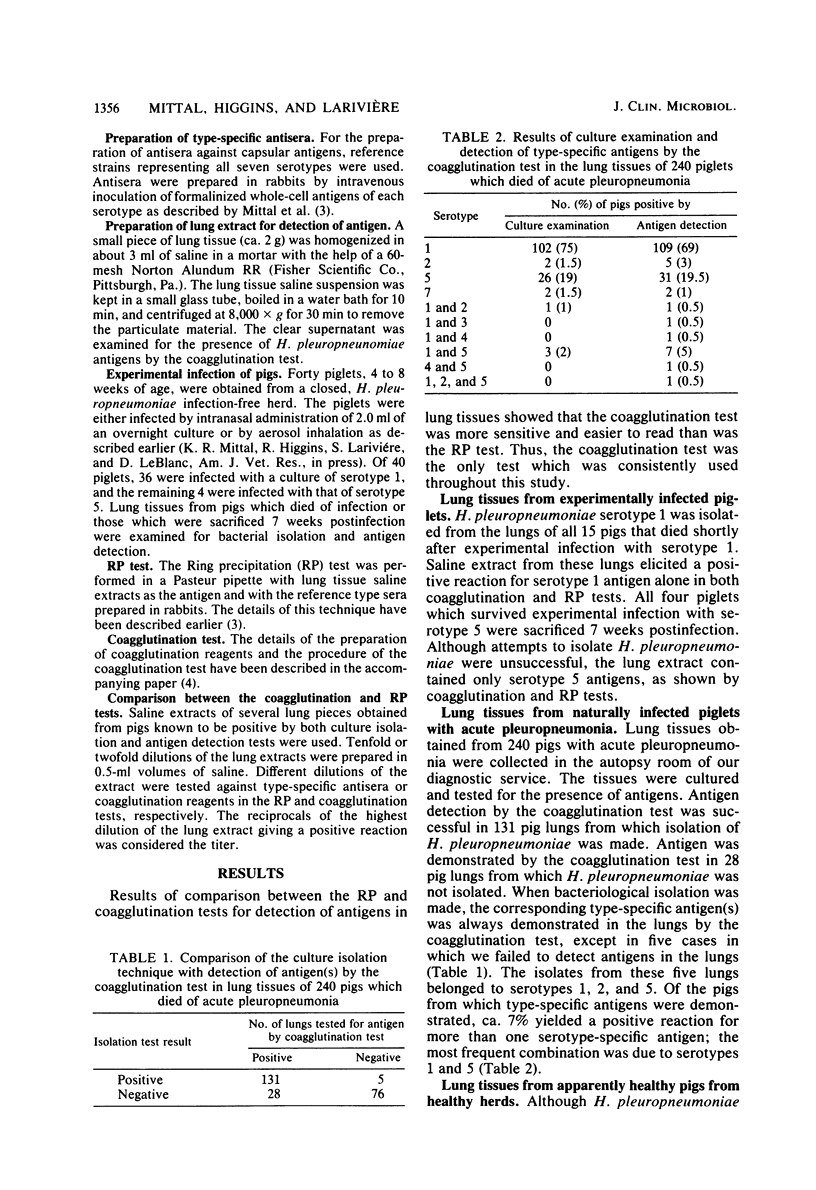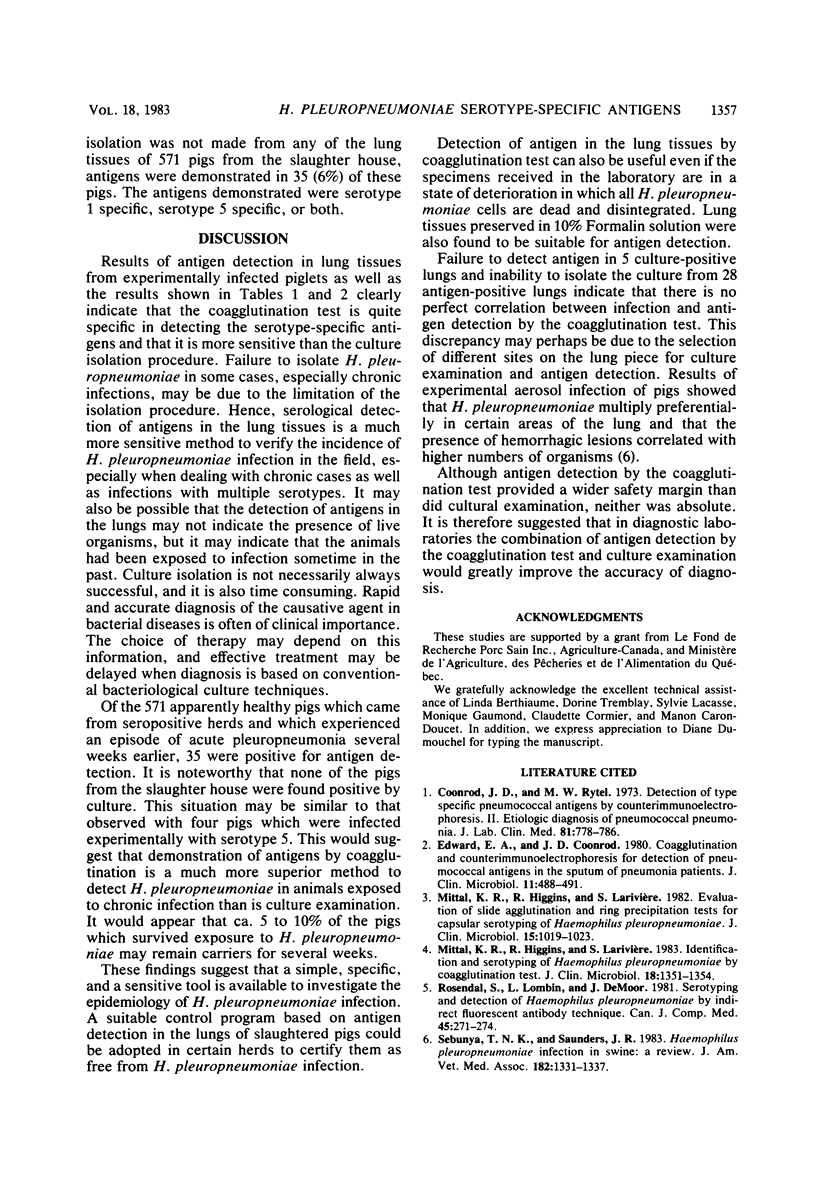Abstract
Specific diagnosis of Haemophilus pleuropneumoniae infection by the conventional culture and identification method usually requires 3 to 4 days. Since H. pleuropneumoniae may be disseminated from infected individuals during this period, this amount of time required for diagnosis may be too slow to aid in epidemic control. To obtain an earlier diagnosis, a coagglutination test was successfully used to detect serotype-specific antigens in lung extracts of infected pigs. A total of 19 lung tissues from experimentally infected pigs, 240 lung tissues from naturally infected pigs that died of pleuropneumonia, and 571 lung specimens from an apparently healthy pig population were examined for culture isolation as well as for antigen detection. The results showed that detection of antigens in lung tissues by the coagglutination test is an extremely rapid, simple, quite specific, and highly sensitive procedure for the diagnosis of H. pleuropneumoniae infection. Further, detection of antigens in lung tissues was found to be a much simpler and much more rapid method than culture isolation. The coagglutination test seems to be especially useful for detecting H. pleuropneumoniae in pigs exposed to chronic infection as well as those in which multiple serotypes are involved.
Full text
PDF


Selected References
These references are in PubMed. This may not be the complete list of references from this article.
- Coonrod J. D., Rytel M. W. Detection of type-specific pneumococcal antigens by counterimmunoelectrophoresis. II. Etiologic diagnosis of pneumococcal pneumonia. J Lab Clin Med. 1973 May;81(5):778–786. [PubMed] [Google Scholar]
- Edwards E. A., Coonrod J. D. Coagglutination and counterimmunoelectrophoresis for detection of pneumococcal antigens in the sputum of pneumonia patients. J Clin Microbiol. 1980 May;11(5):488–491. doi: 10.1128/jcm.11.5.488-491.1980. [DOI] [PMC free article] [PubMed] [Google Scholar]
- Mittal K. R., Higgins R., Lariviere S. Evaluation of slide agglutination and ring precipitation tests for capsular serotyping of Haemophilus pleuropneumoniae. J Clin Microbiol. 1982 Jun;15(6):1019–1023. doi: 10.1128/jcm.15.6.1019-1023.1982. [DOI] [PMC free article] [PubMed] [Google Scholar]
- Mittal K. R., Higgins R., Larivière S. Identification and serotyping of Haemophilus pleuropneumoniae by coagglutination test. J Clin Microbiol. 1983 Dec;18(6):1351–1354. doi: 10.1128/jcm.18.6.1351-1354.1983. [DOI] [PMC free article] [PubMed] [Google Scholar]
- Rosendal S., Lombin L., DeMoor J. Serotyping and detection of Haemophilus pleuropneumoniae by indirect fluorescent antibody technique. Can J Comp Med. 1981 Jul;45(3):271–274. [PMC free article] [PubMed] [Google Scholar]
- Sebunya T. N., Saunders J. R. Haemophilus pleuropneumoniae infection in swine: a review. J Am Vet Med Assoc. 1983 Jun 15;182(12):1331–1337. [PubMed] [Google Scholar]


